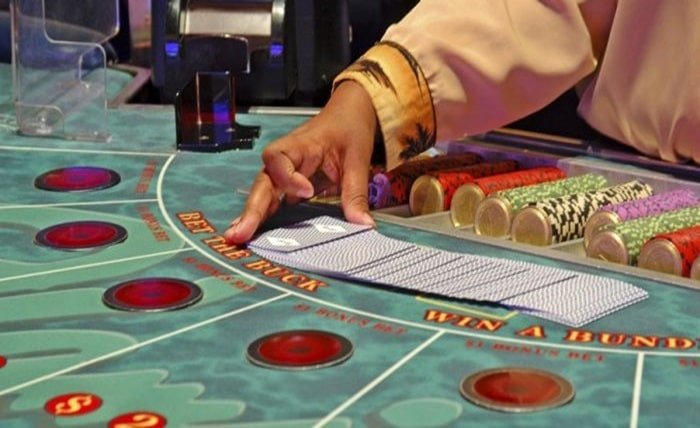Should You Increase Your Wager After A Specific Number Of Spins?

Introduction
Especially when you’re trying to maximize every session, playing strategic and chance-based digital games can be a fascinating experience. Among aficionados, the concept of changing the payback after a given number of spins usually piques interest. As players investigate patterns, personal preference, and financial concerns to determine whether raising their stake improves their chances of success or offers a fresh degree of fun to the game, this approach mixes strategy with psychology.
Why Would You Want To Raise Your Bet?
The idea that some patterns or cycles could influence results helps one to understand the idea of increasing the amount you stake after a particular number of spins. Although this view is more a matter of strategy than assured result, some players think that gradually boosting the bet can improve odds of unlocking unique features or achieving major payouts.
Rising your wager after several rounds could have one possible benefit in terms of more involvement. Many find it increases their excitement and gives each spin some more significance. This change can inspire fresh enthusiasm for your session and offer an opportunity to perhaps record more fulfilling events. Still, one should approach such a plan with reasonable expectations and knowledge of the constraints involved.
Does Your Bet Affect Results?
Regarding digital scatter hitam games with both chance and skill, results are usually meant to be random and unrelated to past spins. This implies that any possible return or loss is not influenced by past results or the frequency of your spinning. Increasing wagers appeals more as a mental tactic since it lets players play with different degrees of investment, thereby allowing them to experiment.
Some games, meanwhile, have certain features or bonuses that might set off at specific points during a play. In such situations, changing your wager could affect the value of such bonuses should they be available at higher levels. If you know of a game, for example, that unlocks particular features depending on wager amount, then a strategic increase could be valuable. Still, the basic randomization usually results in the actual frequency or timing of rewards still outside of player control.
The Psychology Driving Up Your Bet
Psychological considerations rather than statistical likelihood drive one of the main reasons players may decide to increase their stake after several rounds. For example, some may imagine that raising their wager will “break” a run and set off a bigger victory following a sequence of spins with little or no wins at all. Often referred to as the “gambler’s fallacy,” this way of thinking presupposes a pattern in which none exists since every result is usually independent.
One might also connect this predisposition for wagering with a need for excitement and diversity. Adding more after a designated number of spins gives the game a sense of development or change. For many, this small change in approach may revitalize the experience and improve the feel of every next round. Although acknowledging the emotional aspect of this choice is crucial, it would also be wise to be anchored in the reality that raising your wager could not affect your chances of succeeding.
Personal Strategy Based On Bet Increases
Some people find that changing the wager fits their wider budgeting strategy, especially if they have set specific rules about session duration or a specific amount to invest. While still allowing players the freedom to experiment, a planned, orderly rise can help them remain on target with their first intentions.
Using percentage-based increases where the amount wagered is changed based on a certain percentage every specified number of spins is a well-liked method. You might start with a base sum and raise it by a tiny percentage every ten spins, for instance. Though slight, this slow rise lets one move in a more deliberate and less dangerous manner than from abrupt changes.
Usually referred to as “stepping up” or “step-down,” another typical strategy bases increases on the success or failure of past rounds. While with “stepping up,” the wager amount is raised following a victory, with “stepping down,” gamblers reduce the amount should a given spin turn out negative outcomes. Though the outcomes are still random, both techniques seek to give one control over the pace and flow of the session.
Think On The Long-Term Results
Choosing whether to increase your stake over time should be seen in light of your long-term objectives and constraints. Larger wagers, for example, can call for changes to your strategy if your goal is to stretch playtime or keep under a limited budget. On the other hand, modest increases can complement objectives for a given session when included into a well-balanced approach.
Limiting maximum increases helps to avoid inadvertent or unexpected expenditures. This guarantees that you stay under control of your expenditure even while you test several strategies and still have the excitement of possible bigger rewards. Many players discover that a small raise lets them have longer sessions and adds excitement without straying too far from their means.
Other Considerations To Keep In Mind
Some digital games have dynamic elements or progressive characteristics that could influence your decision to raise stakes. Your strategy can be adjusted depending on whether a game features any particular mechanisms that benefit larger wagers at various moments. Although results are still random, characteristics connected to wager size could improve the effect of more.
Conclusion
Whether you want to raise your wager after a specific number of rounds mostly depends on strategy and personal inclination. Although little improvements can provide thrills and a sense of development, keep in mind that every result stays independent and hence increasing your level won’t always affect the number or timing of prizes.





